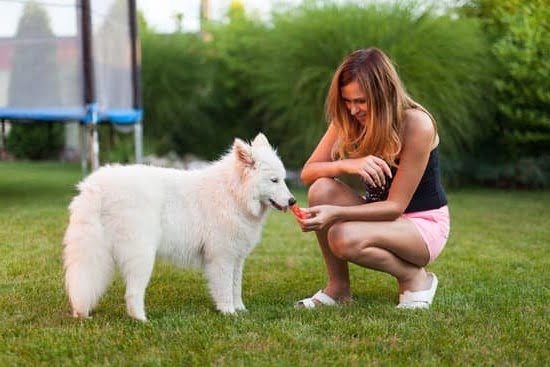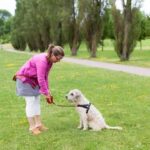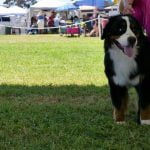Shed hunting has become increasingly popular among outdoor enthusiasts, and the thrill of having a faithful canine companion assist in the search adds an extra layer of excitement to the experience. In this article, we will explore the fascinating world of training dogs to find antler sheds, a skill that not only strengthens the bond between human and dog but also provides a rewarding and productive activity for both.
Shed hunting with dogs is a growing trend that offers a unique way to enjoy the great outdoors while utilizing a dog’s natural abilities. Whether you’re a seasoned shed hunter or new to the sport, training your dog to find antler sheds can add an exciting dimension to your outdoor adventures.
As we delve into this topic, it’s important to understand the distinctive scent of antler sheds and how dogs can be trained to recognize and locate it. We’ll also discuss the significance of a dog’s sense of smell in shed hunting, shedding light on why certain breeds are better suited for this activity than others.
Additionally, we will provide thorough guidance on selecting the right dog for shed hunting and how specific traits play a crucial role in their success in finding antler sheds.
Moreover, we’ll delve into essential training methods for teaching a dog this specialized skill, offering step-by-step instructions on how to kickstart their training journey. Furthermore, advanced techniques will be introduced to help enhance their abilities even further as well as insight into beneficial tools and equipment necessary for successful shed hunting trips with dogs. Join us as we uncover all there is to know about embarking on an exhilarating shed hunting adventure with man’s best friend.
Understanding the Scent of Antler Sheds
Shed hunting with dogs has become a popular activity for outdoor enthusiasts, offering a blend of adventure and camaraderie with our furry companions. One of the key aspects that make shed hunting with dogs so thrilling is teaching them how to find antler sheds. As any experienced shed hunter will attest, training a dog to locate antler sheds can significantly enhance the overall experience and success of the hunt.
When it comes to training dogs to find antler sheds, it all begins with understanding the unique scent of these discarded deer or elk antlers. The scent that emanates from antler sheds is distinct, and dogs have the incredible ability to detect it with their powerful sense of smell. Teaching a dog to recognize and locate this specific scent is fundamental in shedding hunting training.
To start training a dog to find antler sheds, it’s important to understand that certain breeds are better suited for this task than others. Breeds such as Labrador Retrievers, German Shorthaired Pointers, and English Springer Spaniels are known for their exceptional scenting abilities and high energy levels, making them ideal for shed hunting. However, any breed can be trained for this purpose as long as they exhibit enthusiasm and determination in their training.
Here are some basic training techniques on how to train dogs to find antler sheds:
1. Introduce the dog to the scent: Introduce your dog to the scent of antler sheds by allowing them to sniff and get familiar with it.
2. Use positive reinforcement: Reward your dog with treats or praise whenever they show interest in or successfully locate an antler shed.
3. Gradual practice: Start with short practice sessions and gradually increase time spent searching for antler sheds.
4. Scent recognition games: Engage your dog in games that stimulate their sense of smell and reinforce their ability to identify the scent of shed antlers.
As you progress through your journey of teaching your dog how to find antler sheds, remember that ongoing training and practice are essential factors in maintaining and enhancing your furry companion’s skills in shed hunting. With patience, consistency, and dedication, you can turn your four-legged friend into an impressive shed hunting partner.
Selecting the Right Dog for Shed Hunting
Best Dog Breeds for Shed Hunting
When it comes to selecting the right dog for shed hunting, certain breeds tend to excel in this particular activity. Some of the best dog breeds for shed hunting include Labrador Retrievers, German Shorthaired Pointers, and Boykin Spaniels. These breeds are known for their strong sense of smell, high energy levels, and natural hunting instincts, making them ideal candidates for shed hunting. Additionally, mixed-breed dogs with similar traits can also be highly effective in locating antler sheds.
Characteristics and Traits to Look For
When choosing a dog for shed hunting, it’s essential to consider specific characteristics and traits that are conducive to success in this activity. Look for dogs that exhibit a strong desire to retrieve objects and have a keen sense of smell.
Dogs with a high level of energy and endurance are well-suited for the physical demands of shed hunting. Additionally, dogs that demonstrate good focus, trainability, and an eagerness to learn new tasks are more likely to thrive in shed hunting activities.
Training Evaluation and Considerations
Before beginning the training process for shed hunting, it’s crucial to evaluate the individual personality and behavior of the selected dog. Understanding your dog’s unique strengths, weaknesses, and motivations will help tailor the training approach to best suit their needs.
Consider factors such as age, prior training experience, socialization with other animals, and overall temperament when determining if a dog is suitable for shed hunting training. With careful consideration and proper assessment of these factors, you can lay the foundation for successful training on how to train dogs to find antler sheds.
Basic Training Techniques for Shed Hunting
Training a dog to find antler sheds can be an incredibly rewarding and exciting experience. The bond between a dog and its owner grows even stronger when they work together to search for these elusive treasures. However, before embarking on a shed hunting adventure with your furry friend, it’s important to lay down the foundational training techniques to prepare them for the task at hand.
The first step in training a dog to find antler sheds is to introduce them to the unique scent of shed antlers. One effective method is to start by using shed antler scent or shed antlers themselves as a tool for familiarizing your dog with the scent. Start by letting your dog sniff and become familiar with the shed antler scent in a controlled environment.
Next, it’s essential to establish a command for the specific behavior you want your dog to exhibit when they find an antler shed. This can be as simple as teaching them to “find it” or “fetch.” Consistency and positive reinforcement are key during this stage of training.
As your dog starts understanding the association between the scent of shed antlers and the command you’ve established, gradually increase the difficulty of their training exercises. Start hiding shed antlers in plain sight or in different terrains, such as wooded areas or open fields, so that your dog can practice using their sense of smell in various environments.
By following these basic training techniques, you are laying down a solid foundation for your dog’s shed hunting abilities. With patience, consistency, and plenty of praise, you can effectively train your furry companion to become a skilled partner in finding antler sheds.
Advanced Training Methods for Shed Hunting
Improving Scent Discrimination
Once your dog has mastered the basics of finding antler sheds, you can work on improving their ability to discriminate between old and new sheds. This can be done by introducing them to a variety of scents and teaching them to recognize the specific scent of fresh antler sheds.
You can use training aids such as shed antler scent products to help with this process. By consistently exposing your dog to different scents and reinforcing their ability to identify the target scent, you can enhance their skills in shed hunting.
Refining Search Patterns
Another advanced technique for training dogs to find antler sheds involves refining their search patterns. This includes teaching your dog to cover larger areas more systematically and efficiently. You can accomplish this by gradually increasing the size of the search area and incorporating directional commands to guide your dog in a methodical manner. By practicing different search patterns and scenarios, you can help your dog become more thorough and effective in locating antler sheds.
Introducing Distractions
In real-life shed hunting situations, there will be various distractions that can challenge a dog’s focus. To prepare for this, advanced training should involve introducing distractions during practice sessions.
You can simulate distractions such as wildlife scents or other competing smells in the environment, as well as visual or auditory disturbances. By gradually exposing your dog to these distractions and reinforcing their ability to stay focused on the task at hand, you can better prepare them for actual shed hunting outings.
By implementing these advanced training methods, handlers can improve their dogs’ abilities in finding antler sheds. Consistent practice, patience, and positive reinforcement are key components in successfully training dogs for shed hunting.
Tools and Equipment for Shed Hunting With Dogs
Shed hunting with dogs requires some essential tools and equipment to ensure a successful and enjoyable experience for both the dog and the handler. One of the most important pieces of gear is a well-fitted harness or vest for the dog. This not only helps in controlling the dog during the hunt but also provides a place to attach necessary accessories such as GPS trackers or bells.
Another crucial tool is the training aid, which is typically made of antler scent or shed antlers themselves. These aids help in familiarizing the dog with the unique scent of antler sheds, making it easier for them to recognize it during actual hunts. Additionally, having a good-quality leash, collar, and water supply for both the dog and handler is essential when venturing out into the wilderness.
Moreover, equipping oneself with a comfortable backpack equipped with first-aid supplies, snacks, and other essentials is important as well. As shed hunting often involves long walks through various terrains, proper footwear and clothing suited for outdoor activities are also necessary to ensure comfort and safety.
| Tools and Equipment | Description |
|---|---|
| Harness/Vest | Essential for controlling the dog during the hunt and attaching necessary accessories. |
| Training Aid | Aids in familiarizing dogs with the scent of antler sheds. |
| Leash, Collar, Water Supply | Necessary for controlling and providing for both the dog and handler during shed hunting trips. |
| Backpack with First-Aid Supplies | Important for carrying essentials during long walks through various terrains. |
Integrating Shed Hunting Into Regular Exercise and Activity for Dogs
One of the fantastic benefits of shed hunting is that it provides a natural and stimulating form of exercise for dogs. Not only does it satisfy their instinctual desire to hunt, but it also offers an opportunity for physical exertion, mental stimulation, and bonding with their owners.
To ensure that your dog enjoys shed hunting as a part of their regular routine, it is important to introduce the activity gradually. How to train dogs to find antler sheds effectively involves starting with short training sessions and gradually increasing the duration and difficulty over time.
When incorporating shed hunting into a dog’s exercise regimen, it is essential to remember that not all breeds are suited for this demanding activity. While some dogs naturally excel at finding antler sheds, others may struggle due to their size, temperament, or breed characteristics. It is important to carefully select a dog breed that is well-suited for shed hunting based on its natural instincts and physical attributes.
In addition to being an enjoyable form of exercise, integrating shed hunting into a dog’s regular routine can have numerous health benefits. The physical activity involved in combing through wooded areas in search of antler sheds can help improve a dog’s overall fitness levels, promote cardiovascular health, and reduce behavioral issues stemming from boredom or lack of mental stimulation.
By making shed hunting a part of their regular activities, dogs can stay physically active and mentally engaged while forging a stronger bond with their owners.
| Activity Benefits | Health Benefits |
|---|---|
| Natural and stimulating form of exercise | Improves overall fitness levels |
| Mental stimulation and bonding with owners | Promotes cardiovascular health |
| Opportunity for physical exertion | Reduces behavioral issues stemming from boredom |
By harnessing the natural instincts and abilities of dogs through proper training techniques, shed hunting can become a rewarding experience for both owners and their furry companions. Incorporating this activity into a dog’s routine not only helps fulfill their innate desire for exploration but also enhances their overall well-being. So grab your canine partner and embark on an adventure that brings together the joy of spending time outdoors while enjoying the thrill of discovering elusive antler sheds.
Safety and Etiquette in Shed Hunting With Dogs
When it comes to shed hunting with dogs, safety and etiquette are crucial aspects to consider. Not only does this help ensure a successful and enjoyable experience, but it also plays a significant role in preserving the environment and maintaining positive relationships with other hunters and landowners. Here are some important points to keep in mind when engaging in shed hunting with your canine companion:
- Always ensure that your dog is properly trained to follow commands and stay within sight at all times. This will help prevent any potential accidents or conflicts with other hunters or wildlife.
- Observe leash laws and regulations in the areas where you plan to shed hunt. Keeping your dog on a leash when necessary not only helps maintain control but also shows respect for the rules and guidelines set by land management authorities.
- Be mindful of wildlife habitats and nesting areas, especially during sensitive times of the year such as nesting season for birds or denning season for mammals. Avoid disturbing or disrupting these areas to minimize impact on the local ecosystem.
Additionally, practicing proper etiquette when shed hunting with dogs is essential for fostering a positive reputation within the hunting community and preserving access to private and public lands. Here are some etiquette guidelines to follow:
- Always seek permission before entering private property for shed hunting, even if you believe no one else is around. This not only shows respect for the landowner’s rights but also helps maintain good relations within the community.
- Leave no trace – this means cleaning up after yourself and your dog, including properly disposing of any waste generated during the hunt. It’s important to leave the environment as you found it, if not better.
- Respect other hunters’ space and boundaries while shed hunting. If you encounter others in the same area, be courteous and communicate openly to avoid conflicts or crowding in a particular area.
By prioritizing safety and observing proper etiquette while shed hunting with dogs, enthusiasts can contribute to a harmonious outdoor experience for everyone involved while also supporting conservation efforts and responsible land use.
Overall, training dogs to find antler sheds can be an incredibly rewarding experience for both canine companions and their human handlers. With patience, dedication, and adherence to safety measures and etiquette guidelines, shed hunting with dogs can become an enriching activity that fosters strong bonds between humans and their furry friends while contributing positively to wildlife conservation efforts.
Conclusion
In conclusion, training dogs to find antler sheds can be a highly rewarding and fulfilling experience for both the dog and the handler. The bond that is formed through the shared excitement of shed hunting can strengthen the relationship between the two, creating lasting memories and a sense of accomplishment. With proper training and dedication, any dog can be transformed into a skilled shed hunter, adding a new dimension to their regular exercise routine.
The process of teaching a dog to find antler sheds involves understanding their unique scent, selecting the right breed, and implementing basic and advanced training techniques. By providing the necessary tools and equipment, as well as integrating shed hunting into regular activity for dogs, owners can enjoy the outdoors while watching their canine companions thrive in their natural instincts.
Ultimately, shed hunting with a trained dog offers not only physical exercise but also mental stimulation for the dog. It allows them to engage in an activity that taps into their innate abilities while enjoying time outdoors with their favorite human.
The thrill of witnessing a dog locating an antler shed is a truly remarkable experience that brings joy to both the handler and the furry companion. So, grab your gear, leash up your dog, and embark on your own shed hunting adventures – you won’t regret it.
Frequently Asked Questions
How Do You Train a Dog to Find an Antler Shed?
Training a dog to find antler sheds involves using positive reinforcement and patience. Start by introducing the dog to the scent of antlers, then gradually progress to hiding them for the dog to find.
What Is the Best Way to Find Antler Sheds?
The best way to find antler sheds is by scouting in areas where deer are known to frequent, such as feeding and bedding areas. Look for signs of deer activity and focus on thick cover and places where deer might bump their antlers.
Can You Train Your Own Hunting Dog?
Yes, you can train your own hunting dog with dedication, consistency, and proper guidance. It’s important to start training at a young age and use positive reinforcement techniques to teach retrieving, tracking, and obedience skills.

Welcome to the blog! I am a professional dog trainer and have been working with dogs for many years. In this blog, I will be discussing various topics related to dog training, including tips, tricks, and advice. I hope you find this information helpful and informative. Thanks for reading!





